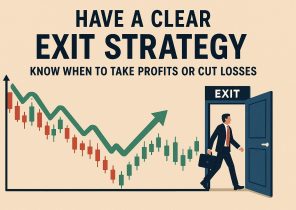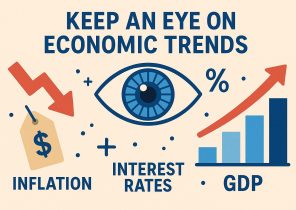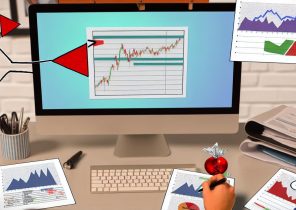Understanding Overtrading
Overtrading is a phenomenon where investors engage in frequent buying and selling of financial instruments. This practice can have a detrimental effect on investment portfolios due to several factors, including high transaction fees and the impact of emotional decision-making. While trading in financial markets can be profitable, the practice of overtrading can offset potential gains through increased costs and erratic decision-making. Understanding the implications of overtrading is crucial for investors aiming to optimize their portfolio returns.
High Costs of Frequent Trading
One of the primary consequences of overtrading is the increase in transaction fees. Every transaction incurs a cost, which can quickly accumulate, especially in markets where fees are significant. These costs can erode the profitability of trades and, over time, significantly reduce the net returns of an investment portfolio. It’s important to consider these fees as a hidden cost of frequent trading, as they often go unnoticed by investors who focus largely on the apparent gains from market movements. Though each transaction might seem innocuous in isolation, the cumulative impact of these fees can be substantial.
Additionally, frequent trading may lead investors to incur taxes that further diminish their overall returns. Short-term capital gains, which are taxed at a higher rate than long-term gains, can burden investors who trade often with substantial tax liabilities. The tax implications are often underestimated, yet they can profoundly affect the end-of-year results for active traders. Investors who prioritize frequent transactions may find themselves retaining less of their profits than those who adopt a long-term investment strategy.
Emotional and Psychological Impacts
Overtrading is not only financially costly but also mentally taxing. The constant need to make decisions based on market fluctuations can lead to emotional trading, characterized by fear and greed. Emotional decision-making often leads to mistakes, such as buying at high prices due to fear of missing out (FOMO) or selling in panic during market downturns. The emotional rollercoaster provoked by constant watching of the markets can lead to psychological fatigue, ultimately clouding judgment and reducing the quality of investment decisions.
Moreover, the stress and anxiety associated with rapid trading can negatively affect an investor’s mental well-being. Continuous market monitoring and reacting to every small shift may not only diminish financial returns but also personal satisfaction. Over time, the psychological toll may lead to burnout, diminishing one’s ability to maintain a coherent investment strategy. Understanding the mental cost associated with overtrading can help investors refocus their strategies toward more stable approaches.
Maintaining a Long-Term Perspective
One way to avoid the pitfalls of overtrading is to maintain a long-term investment strategy. By focusing on fundamental analysis and long-term growth potential, investors can minimize the influence of momentary market fluctuations on their decision-making. This approach can lead to more stable and sustainable returns over time. Long-term investments often benefit from reduced transaction costs and lower tax rates on long-term capital gains, amplifying net portfolio returns.
Long-term strategies typically involve buying and holding investments over several years, as opposed to trading on short-term market dynamics. This approach requires patience and a firm belief in the underlying fundamentals of the chosen investments. By concentrating on the big picture, investors often avoid the distractions of daily market noise and the lure of speculative opportunities, staying focused on wealth accumulation over time.
Furthermore, a long-term perspective can help investors better weather market volatility. By expecting and accommodating market downturns within a long-term plan, investors are less likely to make fear-driven decisions during periods of economic uncertainty. This strategic patience often translates to staying the course in the face of temporary setbacks, ultimately leading to more rewarding investment outcomes.
Resources for Better Trading Practices
Investors seeking to improve their trading strategies and avoid overtrading can make use of various educational resources. Online platforms, such as investment courses and financial advice blogs, provide valuable insights and strategies for maintaining a disciplined trading approach. Education and awareness are crucial for developing a trading strategy that minimizes the detrimental effects of overtrading. Gaining insights from experienced financial educators and leveraging technological resources can pave the way for more informed and less impulsive trading decisions.
The application of technology, too, plays a pivotal role in adopting better trading practices. Trading algorithms and planning software allow investors to automate many aspects of their trading strategies, reducing the potential for emotionally driven decisions. By pre-setting criteria for buying and selling, investors can remove some of the emotional factors that lead to overtrading. Leveraging such tools effectively requires an understanding of market analysis and a commitment to disciplined investing.
Continuous education remains essential for both novice and seasoned investors aiming to refine their tactics and achieve financial success. For further guidance, consider the wealth of information available on reputable financial education websites like Investopedia. These platforms offer comprehensive articles, tutorials, and resources tailored to empower investors with the knowledge needed to maintain a sustainable trading path.
In conclusion, the practice of overtrading presents several challenges that can hamper investment performance. By recognizing the financial and emotional costs associated with this behavior, investors can implement strategies aimed at reducing transaction frequency and enhancing portfolio stability. Through a commitment to long-term planning and leveraging educational resources, investors can cultivate more effective trading habits that support sustainable financial growth and personal well-being.
This article was last updated on: August 25, 2025








